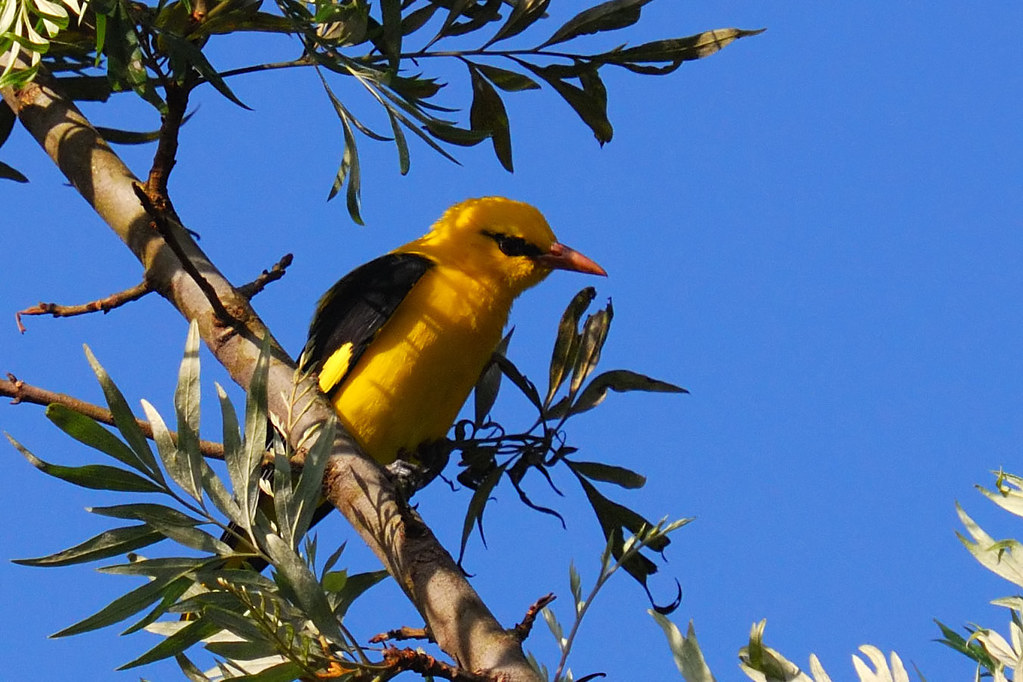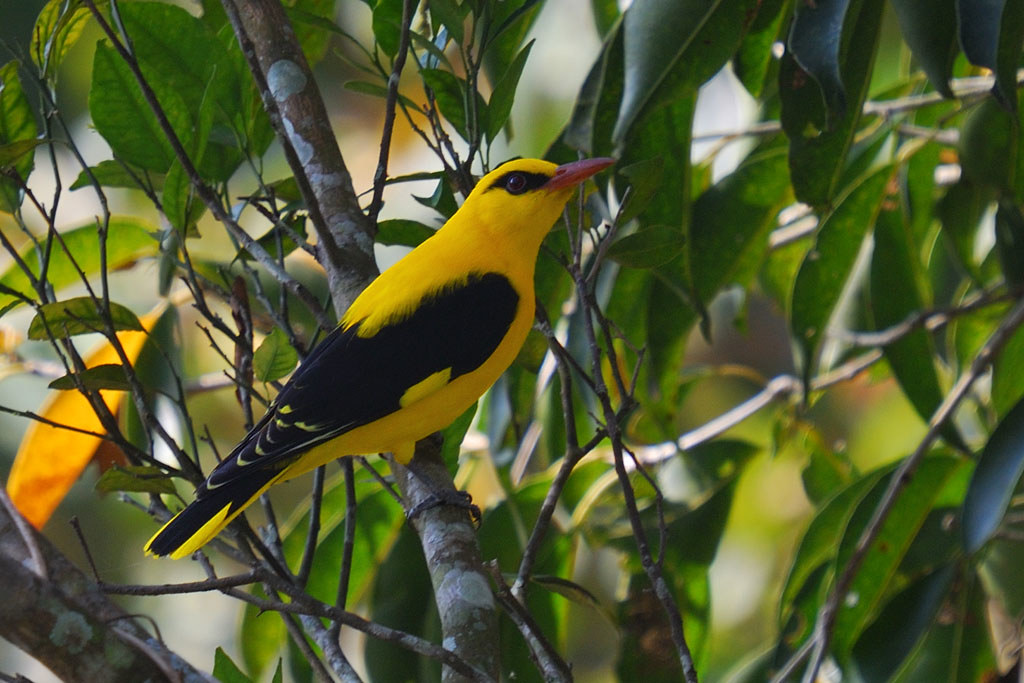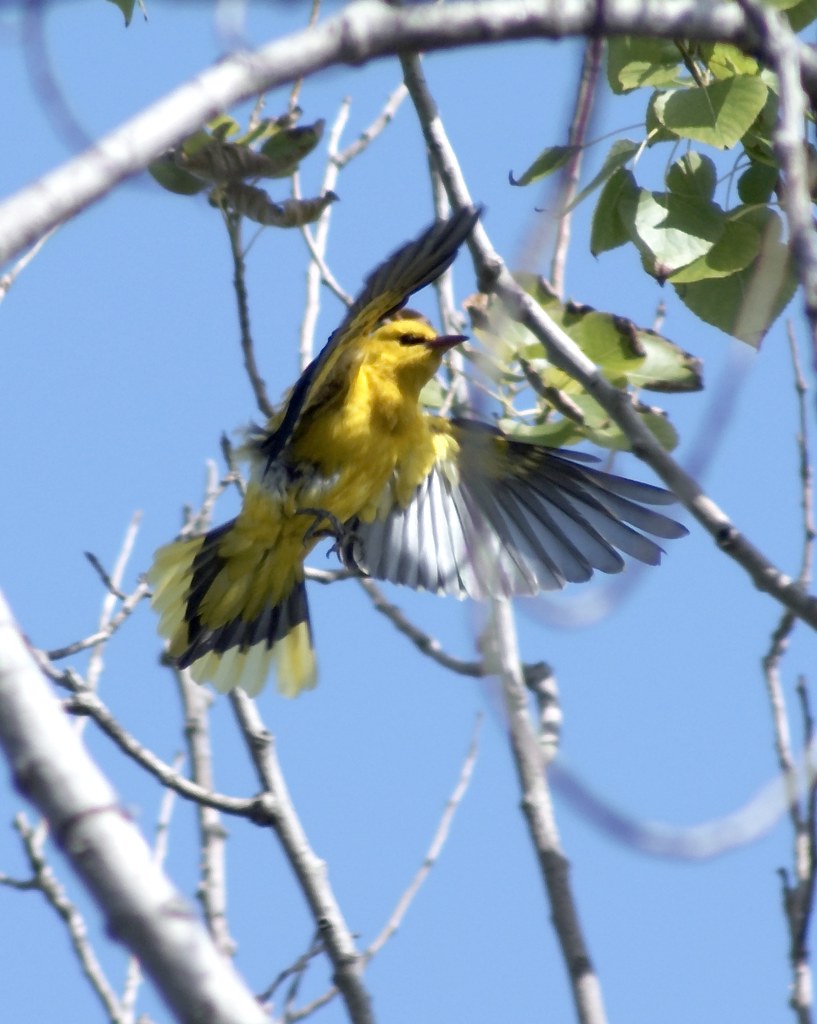Eurasian Golden Oriole
Oriolus oriolus
Present in the Danube Delta from may throughout summer, these birds migrate during winter to central and southern Africa. The male has striking black and yellow plumage, but the female is more common looking with gray and yellowish-green feathers. Its beak is reddish, less intense in the case of the female, and the legs are grey. The body length is 24 – 25 cm, and they weigh 42 – 102 g.
The nest is placed high in a tree towards the edge of the crown. The deep cup-shaped nest is suspended below a horizontal fork of thin branches. It is built by the female, but the male will sometimes gather some of the material. Orioles are shy, and even the colorful male is difficult to spot in the tree canopies.
They feed on fruit and insects, using their beaks to pick bugs out of crevices.
Their English name as well as their scientific name is derived from the latin word aureolus – golden, a fitting title!

Photographer: Shrihari Kulkarni

Photographer: Shrihari Kulkarni
Prezente în Delta Dunării din mai până în toamnă, aceste păsări migrează în anotimpul rece către Africa centrală și de sud. Masculul are penaj negru și galben spectaculos, dar femela are un aspect mai comun, cu pene gri și galben-verzui. Ciocul este roșiatic, mai puțin intens în cazul femelei, iar picioarele sunt gri. Lungimea corpului este de 24 – 25 cm, iar greutatea este între 42 – 102 g.
Cuiburile sunt făcute în copaci înalți către marginea coroanei. Acesta are formă de cupă adâncă, suspendat adesea sub o furcă orizontală de ramuri subțiri. Este construit de către femelă, dar masculul uneori adună și el material. Grangurii sunt timizi, chiar și masculul viu colorat fiind greu de observat în coroanele copacilor.
Se hrănesc cu fructe și insecte, folosindu-și ciocul pentru a prinde insectele din crăpături.
Numele lor în engleză (golden oriole), precum și numele lor științific provin de la cuvântul latin “aureolus” – auriu, un titlu foarte potrivit. Pe de altă parte, numele său românesc, tot de origine latină, a derivat direct din numele latinesc al păsării – galgulus.
Grangur
Oriolus oriolus
Pirol
Oriolus oriolus
Diese Vögel, die vom Mai bis zum Sommer im Donaudelta anzutreffen sind, ziehen im Winter ins zentrale und südliche Afrika. Das Männchen hat ein auffälliges schwarz-gelbes Gefieder, während das Weibchen mit seinem grauen und gelblich-grünen Gefieder eher gewöhnlich aussieht. Der Schnabel ist rötlich, beim Weibchen weniger intensiv, und die Beine sind grau. Die Körperlänge beträgt 24 – 25 cm, und sie wiegen 42 – 102 g.
Das Nest wird hoch in einem Baum am Rande der Krone angebracht. Das tiefe, schalenförmige Nest hängt unter einer horizontalen Gabelung aus dünnen Ästen. Es wird vom Weibchen gebaut, aber das Männchen sammelt manchmal einen Teil des Materials. Pirols sind scheu, und selbst das farbenprächtige Männchen ist in den Baumkronen nur schwer zu entdecken.
Sie ernähren sich von Früchten und Insekten, wobei sie ihre Schnäbel benutzen, um Käfer aus Ritzen zu picken.
Ihr englischer und wissenschaftlicher Name leitet sich von dem lateinischen Wort aureolus – golden – ab, ein passender Titel!

Photographer: Shrikaanth Sekar

Photographer: Ferran Pestana
Présents dans le delta du Danube de mai à tout l’été, ces oiseaux migrent durant l’hiver vers l’Afrique centrale et australe. Le mâle a un plumage noir et jaune frappant, mais la femelle est plus commune avec des plumes grises et vert jaunâtre. Son bec est rougeâtre, moins intense chez la femelle, et les pattes sont grises. La longueur du corps est de 24 à 25 cm et ils pèsent de 42 à 102 g.
Le nid est placé haut dans un arbre vers le bord de la couronne. Le nid profond en forme de coupe est suspendu sous une fourche horizontale de fines branches. Il est construit par la femelle, mais le mâle recueillera parfois une partie du matériel. Les loriots sont timides et même le mâle coloré est difficile à repérer dans la canopée des arbres.
Ils se nourrissent de fruits et d’insectes, utilisant leur bec pour extraire les insectes des crevasses.
Leur nom anglais ainsi que leur nom scientifique est dérivé du mot latin aureolus – doré, un titre approprié !
Rigogolo
Oriolus oriolus
Try using these colors:
Remember, there are always more colors than you think you see!





